Rabbit Description, Species, & Facts Britannica

Rabbit Description, Species, & Facts Britannica
There are 23 types of bones that make up a rabbit's skeleton: Cranium, scapula, spine, fibula, tibia, femur, ilium, sacrum, caudal vertebrae, calcaneus, tarsus, metatarsus, phalanges, ulna, ribs, radius, carpus, metacarpus, sternum, cervical vertebrae, atlas, mandible and maxilla. Composition

Art Enrichment Lessons Art with Mrs. Lau Animal Skeletons, Animal
Husbandry Etymology The mammalian order Lagomorpha consists of two living families: Leporidae (rabbits and hares) and Ochotonidae (pikas) (Fig. 12-1). The scientific name for the Old World or European rabbit from which all domestic breeds originate is Oryctolagus cuniculus.

Rabbit skeletal structures Diagram Quizlet
The rabbit's skeleton is delicate in relation to its size. The skeleton makes up approximately 8% of their body weight in comparison to a cat, whose skeleton repre-sents 12-13% of its body weight (Cruise and Brewer, 1994). Strong epaxial muscles in the presence of a rela-tively weak lumbar spine predisposes rabbits to frac-
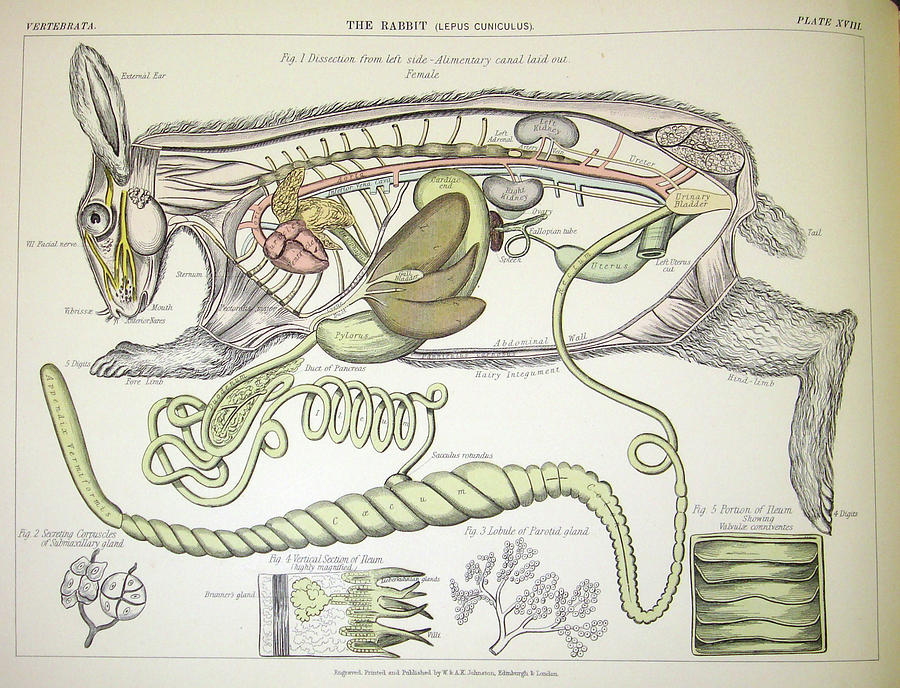
Rabbit Anatomy Photograph by Natural History Museum, London/science
A rabbit skeleton is a complex and resilient structure composed of bones, joints, and ligaments that provide the framework for the body. It is lightweight yet strong enough to support and protect vital organs such as respiration, circulation, and locomotion. The vertebral column, ribs, pelvic girdle, forelimbs and
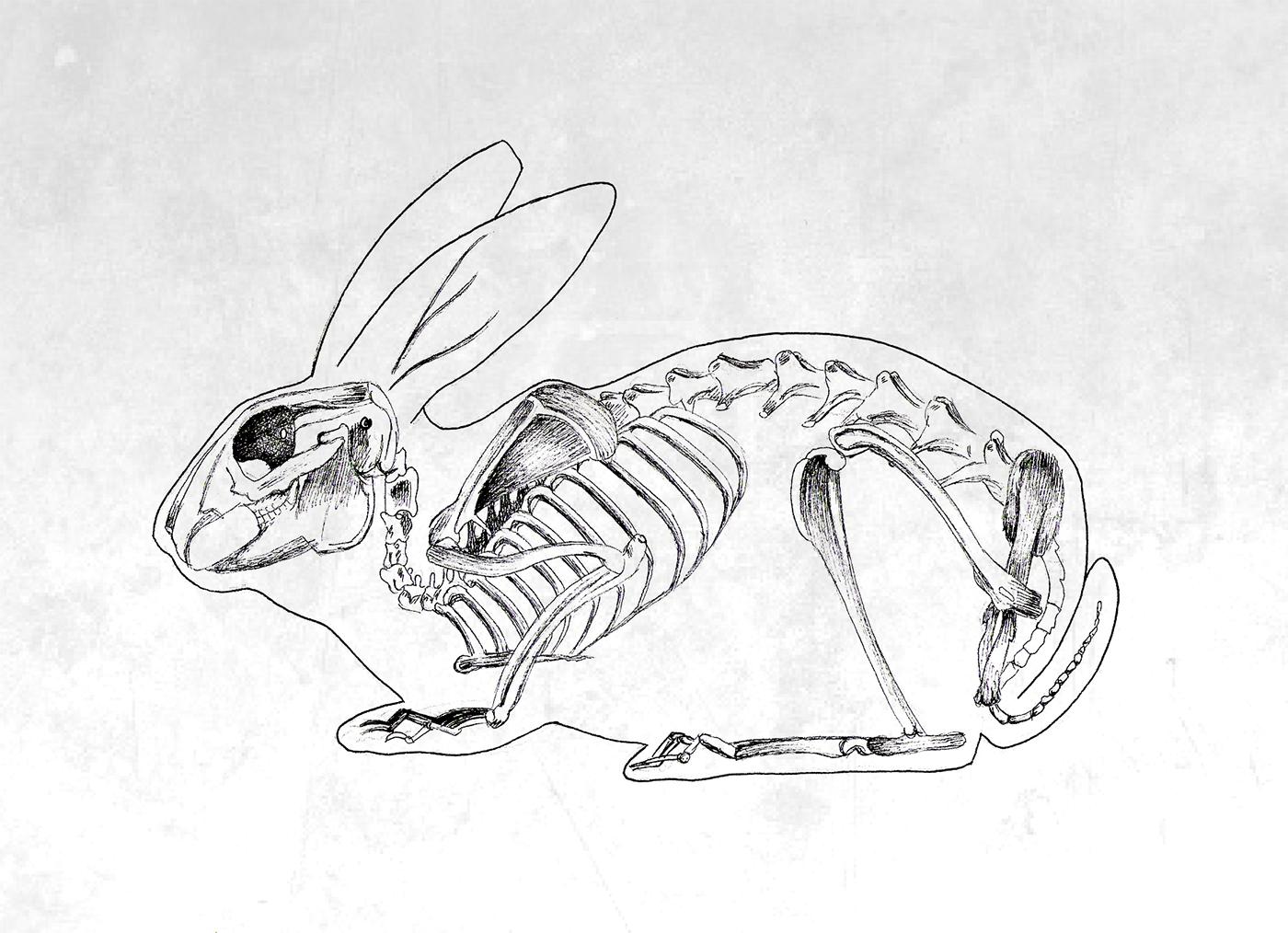
Rabbit skeleton on Behance
CLASS SET Rabbit Anatomy - Rabbit Body Systems Rabbit Anatomy - Body Areas Rabbit Anatomy - Systems Rabbit Skeletal System Rabbit Muscular System Rabbit Digestive System Rabbit Respiratory System Rabbit Cardiovascular System Rabbit Urogenital System Urinary System Reproductive System Rabbit Dental System Rabbit Sense System Eyes Nose Ears
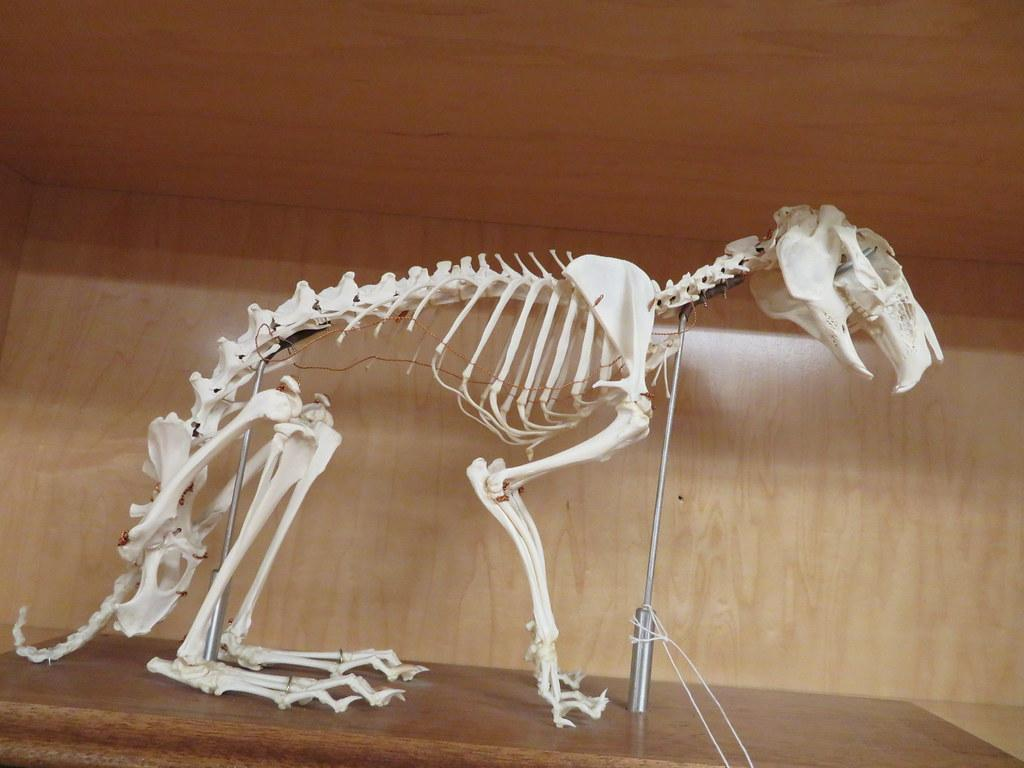
Total number of bones in appendicular skeleton of rabbit is(A) 128(B
The skeletal system of a rabbit, providing structural integrity. Rabbits possess an array of fascinating external body parts that contribute to their unique appearance and remarkable abilities. Let's take a closer look at the captivating features of their heads and bodies, unraveling the secrets behind each component. A. Rabbit's Head

Rabbit Skeleton on white background, 3d rendering Stock Photo Alamy
AnatomyStuff 330 subscribers 4 698 views 11 months ago Learn the names and placements of a rabbit's internal organs with our new video. Discover more with our free resources section on our.

Scientific Illustration Rabbit skeleton, Skeleton anatomy, Rabbit anatomy
Domestic rabbits, Oryctolagus cuniculus, belong to the order Lagomorpha, and their ancestors are from Western Europe and northwestern Africa. 1, 2 Unlike rodents, lagomorphs have a second set of maxillary incisors directly caudal to the first set.

4.12 shows the rabbit skeleton. The bones used in this study were the
A rabbit's skeleton is delicate compared to its muscle mass. Rabbits' body weight is between 7-8 percent skeleton and more than 50 percent skeletal muscle. For comparison, a cat's skeleton comprises between 12-13 percent of body weight.. The rabbit digestive system is sensitive and requires a delicate balance for them to absorb the.

the skeleton of a rabbit is shown in this diagram, with labels on its body
Like other species, rabbits are composed of eyes, noses, ears, lips, and other body systems. All parts of their body work as one to help your pet function effectively. According to the American Association of Anatomy, the word " anatomy " is the study of the body structure in humans, animals, and plants.

skeletal rabbit anatomy
Rabbits' skeletal structure consists of a short spine, powerful hind legs, and long ears. Their hind legs are strong and muscular, allowing them to leap up to three feet in the air. The ears, meanwhile, are long and mobile, allowing them to detect predators from far away.
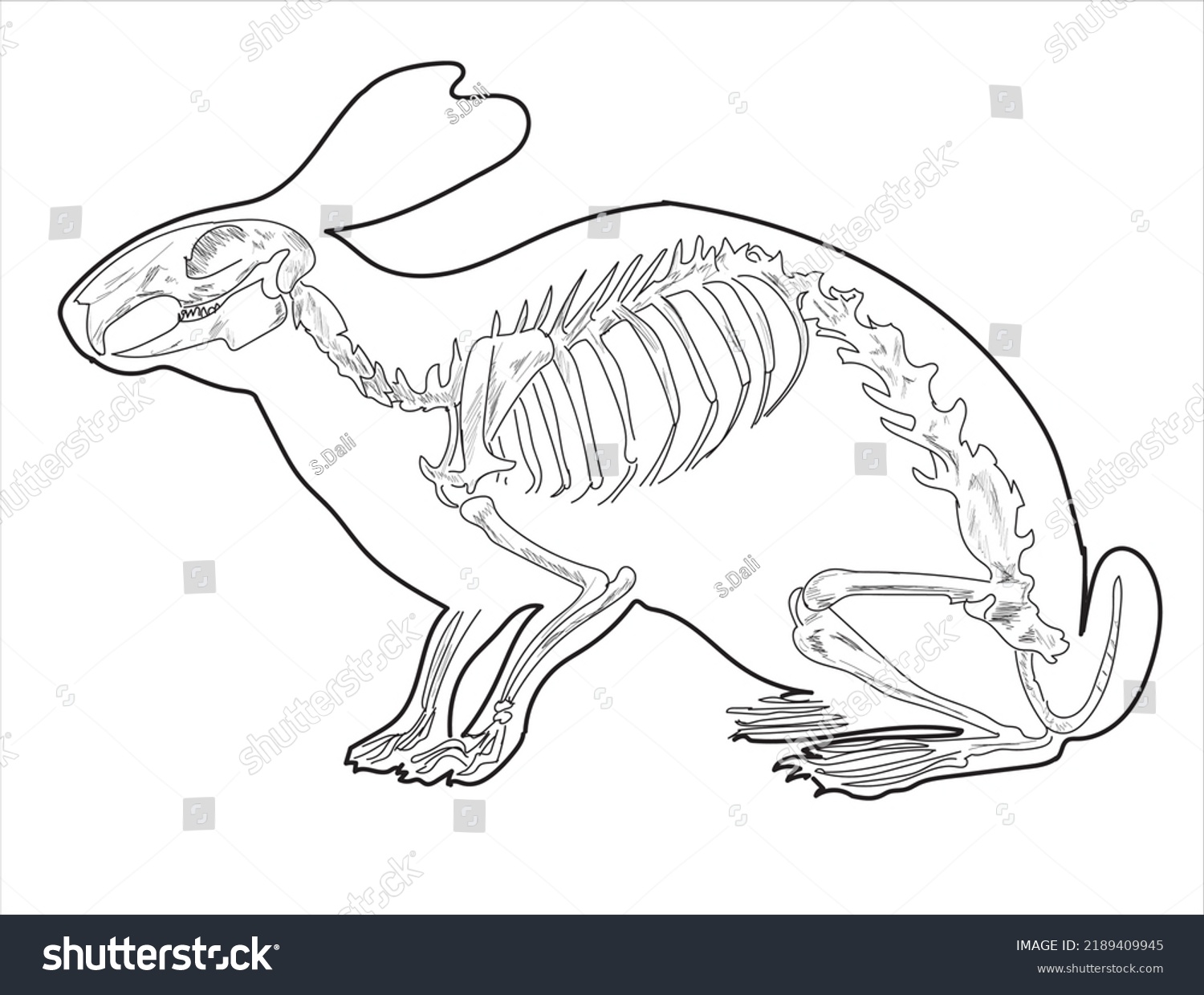
Rabbit Skeletal System On White Background Stock Vector (Royalty Free
Rabbits have two pairs of incisors in the maxilla, and one pair in the mandible which has enabled zoologists to clearly distinguish between rabbits (and lagomorphs in general), and rodents that only have one pair in the maxilla and one pair in the mandible.

4.12 shows the rabbit skeleton. The bones used in this study were the
Natural history. While the European rabbit is the best-known species, it is probably also the least typical, as there is considerable variability in the natural history of rabbits. Many rabbits dig burrows, but cottontails and hispid hares do not.The European rabbit constructs the most extensive burrow systems, called warrens. Nonburrowing rabbits make surface nests called forms, generally.

Full Color Art Paper Laminated Skeleton Of Rabbit For Zoology Chart
Part of LafeberVet's Rabbit Basics Teaching Module, the Rabbit Anatomy Basics slideshow is a 22-minute recording designed to impart a basic understanding of rabbit anatomy for the veterinary technician and veterinary nurse.

Parts of the Rabbit skeleton
12/05/2023 14/05/2021 by Sonnet Poddar You will find many variations on rabbit anatomy in comparison to ruminant or equine. In this article, I will discuss the detailed anatomy of rabbits. You will get the essential features of the skeleton, muscles, internal organs, and other organs from the male and female rabbit.
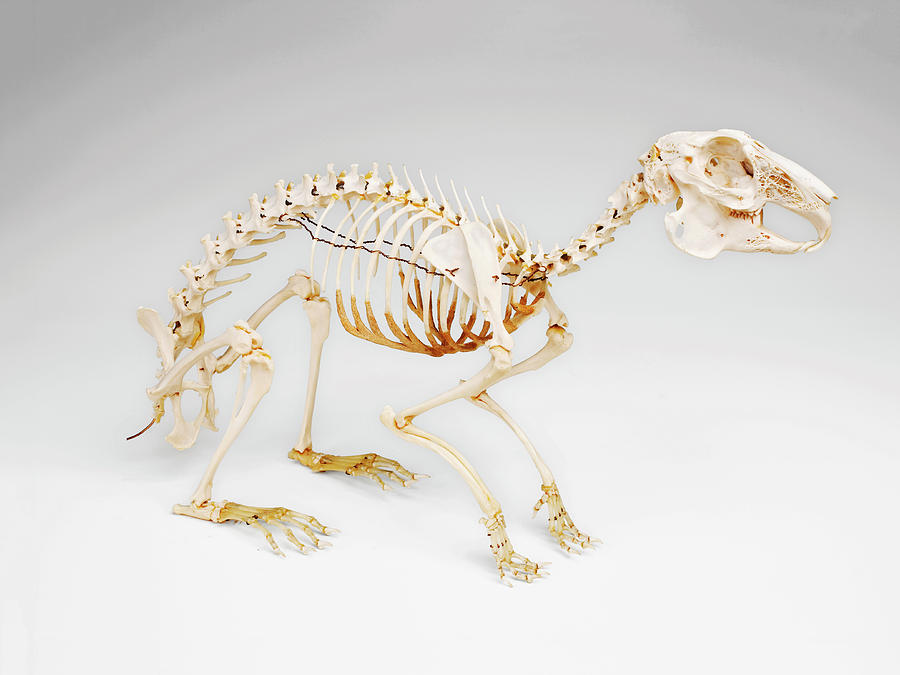
Rabbit Skeleton Photograph by Ucl, Grant Museum Of Zoology Pixels
Nose A r abbit's nose has sensitive whiskers. These whiskers help them to breathe easier by adjusting the exchanges of air. They also regulate the inhaled air flows and heat. Through their nasal mucosa, they can easily detect chemicals. The morphology of rabbits' noses directs how the air flows in and out of their lungs.